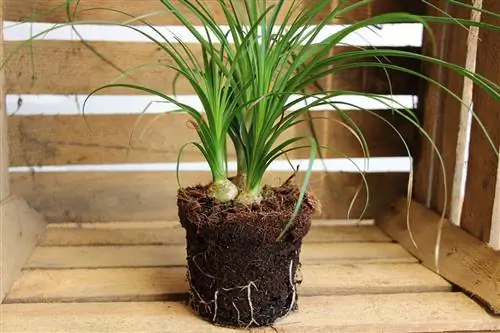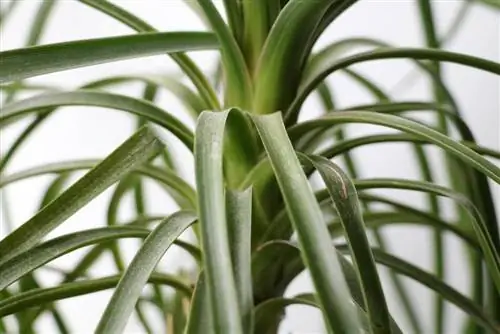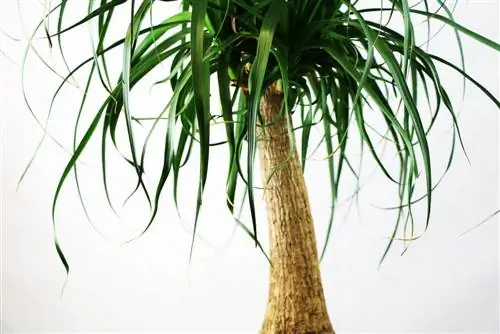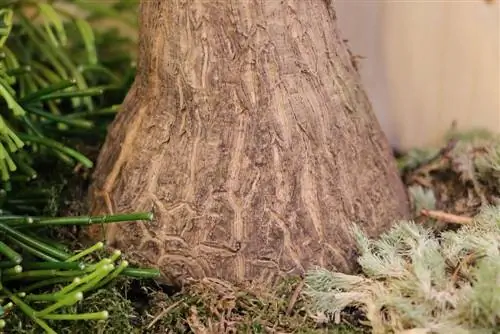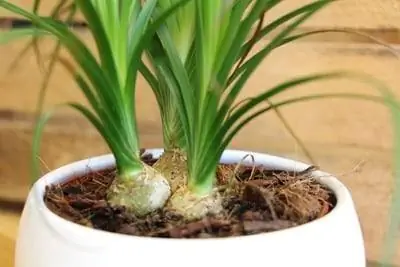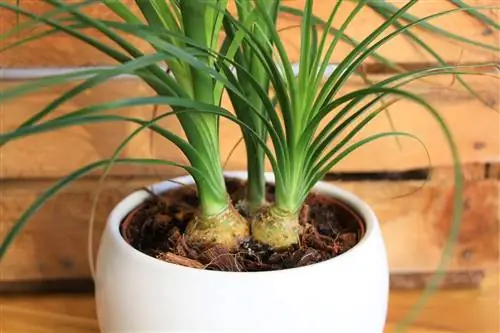- Author admin [email protected].
- Public 2023-12-17 03:39.
- Last modified 2025-01-24 12:45.
The elephant's foot (Beaucarnea recurvata) is a popular houseplant for beginners as it tends to forgive one or two care mistakes. Nevertheless, the basic requirements for the plant should be met - such as the right substrate.
What properties should the substrate have?
The elephant's foot should be placed in a new pot with fresh soil from time to time. In addition to the right pot size, the properties of the substrate are crucial for the further development of Beaucarnea recurvata. Because he feels most comfortable in a soil that has the following properties:
- Sandi to loamy
- Moderately dry to fresh
- Low humus
- Moderately nutritious
- Well drained
- Loose
Did you know?
The elephant foot is also called the water palm, bottle tree or step stool.
Cactus soil
Cactus soil is best suited as a substrate for the bottle tree because it has the optimal conditions: it consists of many minerals and can store nutrients well and it is loose and permeable. It is available in stores and online, but can also be mixed together yourself in just a few steps:
- 50% potting soil
- 15% peat or coconut fiber
- 15% dried clay or clay
- 20% quartz sand (no construction or play sand!)
potting soil
Ordinary potting soil is often recommended as a substrate for the water palm - but this is only recommended to a limited extent. On the one hand, it is not permeable enough and, on the other hand, it does not permanently meet certain plant requirements. These include, among other things, buffering power, but also water and nutrient regulation. While potting soil is not the best choice on its own, it can be loosened up in combination with lava granules or gravel and thus used as soil for the bottle tree.
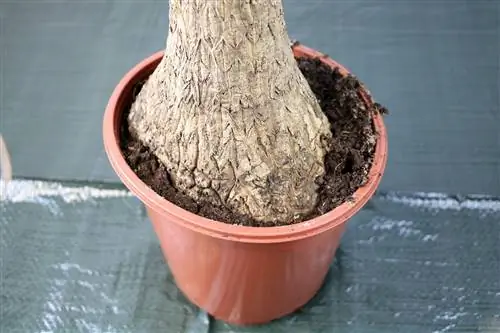
Compost soil
Compost soil is also a popular soil mixture for the bottle tree: it is sufficiently rich in nutrients and has a loose and permeable consistency. Compost soil that is a few years old is best. This can either be purchased commercially or made yourself:
- 40% compost
- 30% quartz sand
- 15% coconut fiber
- 15% clay or dried clay
Seramis plant granules
It's not just soil that can be used as a substrate for the water palm, as Seramis plant granules are also ideal for Beaucarnea recurvata. These are small balls that absorb the irrigation water and make it available to the roots. In addition, the roots can grow into the granules and are therefore always supplied with oxygen, water and nutrients. In addition, the following advantages speak for the use of the granules:
- Does not compact
- Doesn't age
- No mold growth
- Prevents fungus gnats

